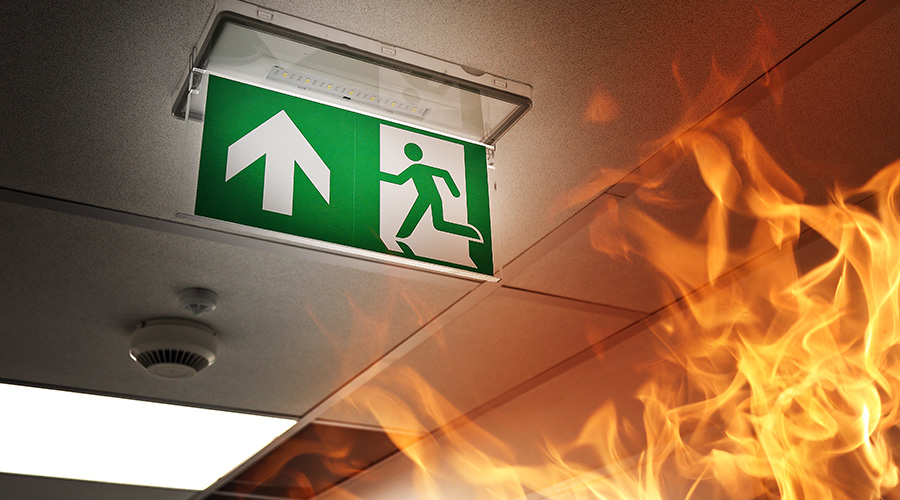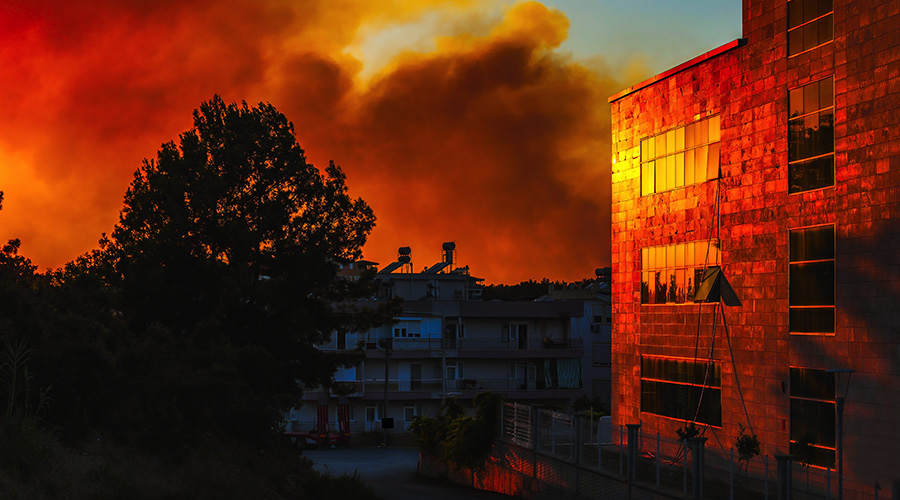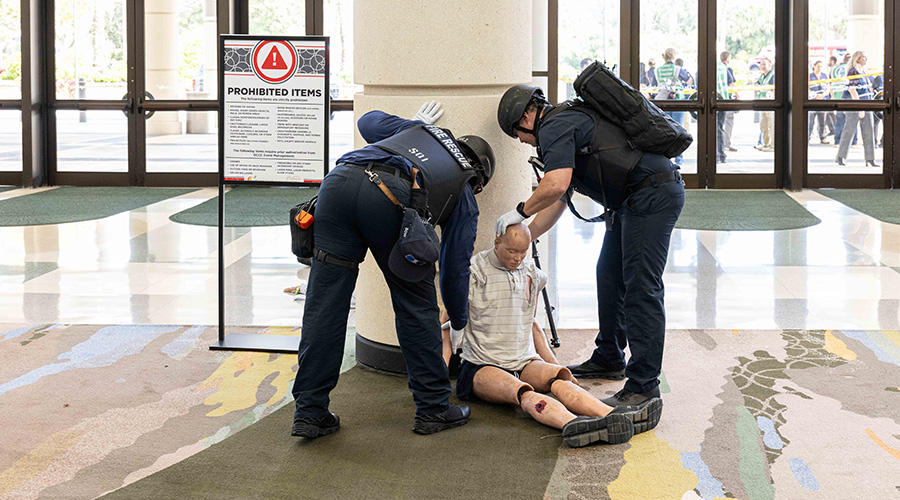Emergency Lighting Systems Take Center Stage in Occupant Safety
Once out of sight and out of mind, emergency lighting systems have become essential components in ensuring occupant safety in a crisis
By Dan Hounsell, Senior Editor
Occupant safety in institutional and commercial buildings remains the highest priority for engineering and maintenance managers. But when it comes to ensuring the performance of emergency lighting systems designed to help occupants in a crisis, the potential obstacles can make the process daunting. From code changes and technology advances to competing maintenance priorities and evolving facilities, managers have their hands full and then some in managing emergency lighting systems.
“As people change and as floor plans change, is everything still in place?” says Bill Conley, national manager of facility services for Yamaha Motor Corp., adding that an emergency lighting system is “out of sight, out of mind. It’s up in the ceiling, and who looks? If there’s a lesson in there based on my personal experience, it’s that we know how critical it is in case of an emergency. We have to pay attention to them to make sure that they’re operable.”
Management challenges
As with many aspects of facilities, emergency lighting systems tend to suffer from being relatively low profile.
“Emergency lighting is easy to put on the back burner unless you have a good plan that says, ‘We’re going to check this, and this is your responsibility,’” says Phil Miller, P.E., senior lighting designer with HGA, an architecture and engineering firm. “You should have a log where you’re checking these things. If you don’t maintain that, it’s easy to forget about it.”
The problems in many facilities are obvious to Miller.
“I visit a lot of facilities where I see stuff that’s in disrepair,” Miller says. “My job as a designer is to design a system that is easy to maintain and everyone can see there’s no hidden things that can fail and that people don’t know about until it’s too late.
“I see it across the board in schools, federal facilities. It’s all types of buildings, and it just seems it’s easy for people to forget it unless they have a good plan and a good manager who’s really keeping on top of that and knows what they need to do.”
Whether the emergency lighting components in question are exit signs, fixtures, invertors or generators, Miller emphasizes the need for test compliance mandated by local codes.
“You’re required to do monthly testing, and good facilities managers know that and keep up on it,” he says.
One ongoing maintenance challenge involves emergency lighting components that are powered by batteries.
“A lot of the exit signs are battery powered, so we have to be concerned about the batteries,” says Conley, who oversees corporate facilities in California and Georgia. “Are they going to run out? Have they run out? We have to do visual checks on them at least monthly to make sure they’re all well lit. The bulbs burn out, so we have to make sure that if a bulb is burned out, we get it replaced as soon as possible because that visibility is so important.”
Michael Burke, principal with Brokaw Design, an architecture and engineering firm, says managers face recurring challenges in their efforts to ensure the performance of emergency lighting systems, which can result in failed inspections, citations or system failure during an actual emergency. The challenges include:
- decentralized systems with hundreds of individual battery units are difficult to monitor consistently
- labor-intensive testing, especially in older facilities without self-diagnostics or remote monitoring
- deferred maintenance due to budget constraints or underestimation of the system’s criticality
- a lack of standardized documentation, leading to difficulty identifying fixtures, battery locations and circuit paths
- compliance risk due to evolving codes and failure to maintain accurate testing records.
Emergency lighting: A new age
The technology incorporated into emergency lighting systems has evolved in recent years, expanding the options available to managers but also requiring greater attention to potential benefits and challenges. Burke points to several recent innovations designed to improve system performance:
- LED retrofits that reduce power consumption and maintenance
- improved battery chemistries such as lithium-ion that offer longer lifespan and reduced maintenance
- digital test controllers that automate scheduling and documentation
- centralized dashboards that can track multiple buildings and zones in real-time.
Miller says his firm has been moving away from specifying fixtures that use batteries.
“No one wants to keep track of 200 batteries in a building,” he says. “Down the road they become hidden, especially if you don’t have any sort of indicator light.
“We typically use generators as our first resort. If we need to have a situation where you can’t even have a 10-second power disruption, we’ll look at batteries but in the way of larger inverter systems, whether that’s one large inverter for the whole building or maybe a few spread across the facility.”
Recent years also have seen growing interest in emergency lighting that does not require power to operate — including photoluminsecent exit signs — reflecting many facilities’ efforts to curtail energy use. Burke says photoluminescent egress systems are gaining popularity, particularly for stairwells and low-level path marking, though they are not a full replacement for powered lighting. They offer redundancy in emergency strategies, along with these benefits:
- no wiring or batteries, reducing failure risk and long-term costs
- reliability during a power loss, assuming sufficient pre-exposure to ambient light
- acceptance by the International Building Code and NFPA 101.
“The photoluminescents work a lot better because they shine,” Conley says of their use in his facilities. “They don’t take power, they don’t take batteries, and they don’t need maintenance until they fade. When we’ve needed to replace one or put new ones up, we’ve used (photoluminescent signs). They’re working fine so far, so good. In probably six years, we haven’t had to replace any that I know of.”
Miller says he is hesitant to specify photoluminescent exit signs.
“They would probably be a last resort beyond even what we consider a last resort where we just can’t get power to a place for some reason,” he says. “We have looked at them, and I have personally not been convinced that they can provide the light levels over a long term that’s needed.
“The ones I’ve seen seem to be very dim. They’ve been there for a while. The issue is it’ll be there, and then it’ll go below the threshold where it’s supposed to be by code, and no one will notice it.”
Technology advances and a greater emphasis on occupant safety in emergencies have moved emergency lighting systems from under-the-radar components to central elements in the overall safe performance of facilities.
“Facility managers should recognize that emergency lighting systems are now an engineered system that requires a lot of forethought and design,” Miller says, adding that the days of simply installing bugeye fixtures and hoping they will work are gone. “Inspectors have gotten sophisticated enough where they will check to make sure that you’re meeting the light levels and uniformity required.
“Emergency lighting is one area in the lighting world where we deal with actual liability because we’re dealing with life safety and getting people out of a building when there’s an actual emergency. Ideally, it’s one of the things we don’t want people to spend a whole lot of time worrying about, but it’s easy to take for granted.”
Dan Hounsell is senior editor for the facilities market. He has more than 30 years of experience writing about facilities maintenance, engineering and management.
Related Topics:











